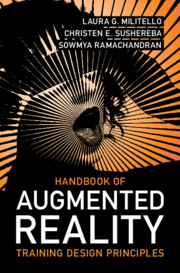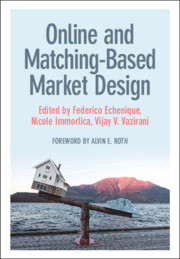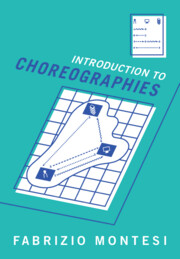Refine search
Actions for selected content:
48284 results in Computer Science
Machine learning approaches for the prediction of serious fluid leakage from hydrocarbon wells
-
- Journal:
- Data-Centric Engineering / Volume 4 / 2023
- Published online by Cambridge University Press:
- 19 May 2023, e12
-
- Article
-
- You have access
- Open access
- HTML
- Export citation
Emerging trends: Risks 3.0 and proliferation of spyware to 50,000 cell phones
-
- Journal:
- Natural Language Engineering / Volume 29 / Issue 3 / May 2023
- Published online by Cambridge University Press:
- 19 May 2023, pp. 824-841
-
- Article
-
- You have access
- Open access
- HTML
- Export citation
Obituary: Yorick Wilks
-
- Journal:
- Natural Language Engineering / Volume 29 / Issue 3 / May 2023
- Published online by Cambridge University Press:
- 19 May 2023, pp. 846-847
-
- Article
-
- You have access
- Open access
- HTML
- Export citation
Raw driving data of passenger cars considering traffic conditions in Semnan city
-
- Journal:
- Experimental Results / Volume 4 / 2023
- Published online by Cambridge University Press:
- 19 May 2023, e14
-
- Article
-
- You have access
- Open access
- HTML
- Export citation

Handbook of Augmented Reality Training Design Principles
-
- Published online:
- 18 May 2023
- Print publication:
- 01 June 2023
A comparison of latent semantic analysis and correspondence analysis of document-term matrices
-
- Journal:
- Natural Language Engineering / Volume 30 / Issue 4 / July 2024
- Published online by Cambridge University Press:
- 18 May 2023, pp. 722-752
-
- Article
-
- You have access
- Open access
- HTML
- Export citation
Subspace coverings with multiplicities
- Part of
-
- Journal:
- Combinatorics, Probability and Computing / Volume 32 / Issue 5 / September 2023
- Published online by Cambridge University Press:
- 18 May 2023, pp. 782-795
-
- Article
-
- You have access
- Open access
- HTML
- Export citation
A pair degree condition for Hamiltonian cycles in 3-uniform hypergraphs
- Part of
-
- Journal:
- Combinatorics, Probability and Computing / Volume 32 / Issue 5 / September 2023
- Published online by Cambridge University Press:
- 17 May 2023, pp. 762-781
-
- Article
-
- You have access
- Open access
- HTML
- Export citation
Recommending tasks based on search queries and missions
-
- Journal:
- Natural Language Engineering / Volume 30 / Issue 3 / May 2024
- Published online by Cambridge University Press:
- 17 May 2023, pp. 577-601
-
- Article
-
- You have access
- Open access
- HTML
- Export citation
RSL volume 16 issue 2 Cover and Back matter
-
- Journal:
- The Review of Symbolic Logic / Volume 16 / Issue 2 / June 2023
- Published online by Cambridge University Press:
- 16 May 2023, pp. b1-b2
- Print publication:
- June 2023
-
- Article
-
- You have access
- Export citation
RSL volume 16 issue 2 Cover and Front matter
-
- Journal:
- The Review of Symbolic Logic / Volume 16 / Issue 2 / June 2023
- Published online by Cambridge University Press:
- 16 May 2023, pp. f1-f4
- Print publication:
- June 2023
-
- Article
-
- You have access
- Export citation
Multistage approach for trajectory optimization for a wheeled inverted pendulum passing under an obstacle
-
- Article
-
- You have access
- Open access
- HTML
- Export citation
Universal geometric graphs
- Part of
-
- Journal:
- Combinatorics, Probability and Computing / Volume 32 / Issue 5 / September 2023
- Published online by Cambridge University Press:
- 15 May 2023, pp. 742-761
-
- Article
-
- You have access
- Open access
- HTML
- Export citation
Determining sentiment views of verbal multiword expressions using linguistic features
-
- Journal:
- Natural Language Engineering / Volume 30 / Issue 2 / March 2024
- Published online by Cambridge University Press:
- 15 May 2023, pp. 256-293
-
- Article
-
- You have access
- Open access
- HTML
- Export citation
Joint learning of text alignment and abstractive summarization for long documents via unbalanced optimal transport
-
- Journal:
- Natural Language Engineering / Volume 30 / Issue 3 / May 2024
- Published online by Cambridge University Press:
- 15 May 2023, pp. 525-553
-
- Article
-
- You have access
- Open access
- HTML
- Export citation

Online and Matching-Based Market Design
-
- Published online:
- 13 May 2023
- Print publication:
- 22 June 2023
Adverse childhood experiences and craving: Results from an Italian population in outpatient addiction treatment
-
- Journal:
- Experimental Results / Volume 4 / 2023
- Published online by Cambridge University Press:
- 12 May 2023, e11
-
- Article
-
- You have access
- Open access
- HTML
- Export citation

Introduction to Choreographies
-
- Published online:
- 11 May 2023
- Print publication:
- 25 May 2023



































